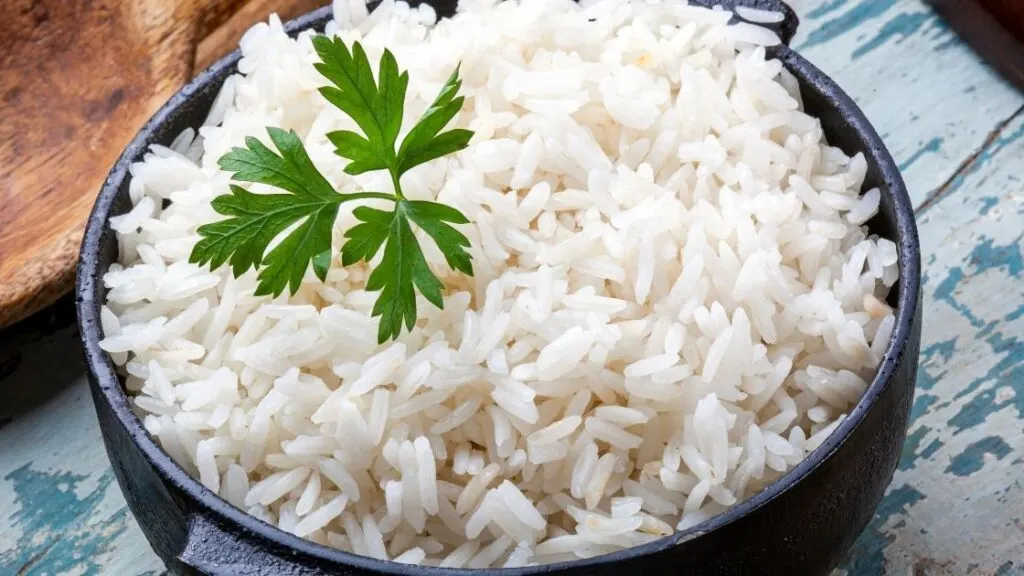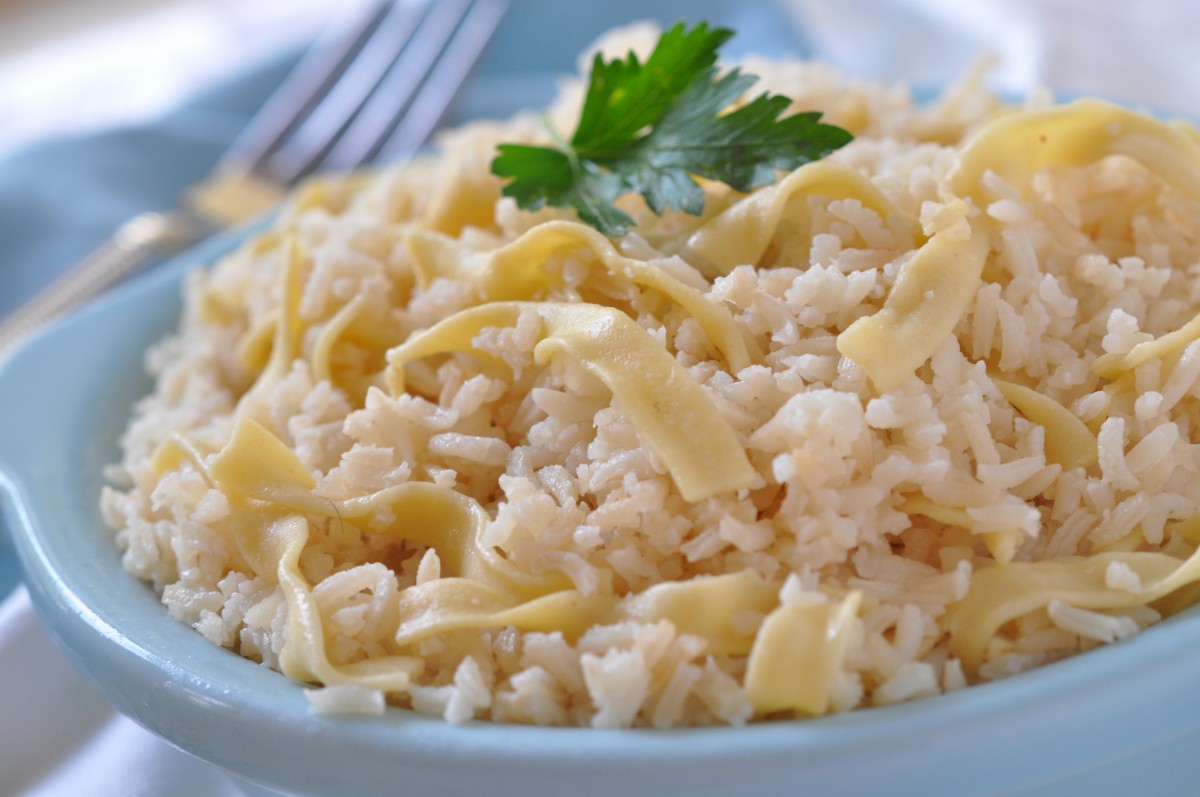Is Rice Good for Acid Reflux? Benefits, Types, and Best Practices
Discover the impact of rice on acid reflux in this comprehensive guide. Learn about safe rice types, such as brown rice, and how they aid digestion. Find tips on portion control, cooking methods, and seasoning to optimize rice consumption for acid reflux sufferers.
Introduction
In this comprehensive guide, we will explore the relationship between rice and acid reflux. Acid reflux, also known as gastroesophageal reflux disease (GERD), is a chronic condition where stomach acid flows back into the esophagus, causing discomfort and heartburn. Diet plays a crucial role in managing acid reflux symptoms, and we’ll delve into how rice fits into an acid reflux-friendly diet.
Approximately 20% of the US population experiences acid reflux symptoms at least once a week, making it a prevalent gastrointestinal concern. While medical intervention may be necessary in severe cases, dietary adjustments can significantly impact symptom management and overall well-being.
1.1 What is Acid Reflux?
Before diving into rice’s impact on acid reflux, it’s essential to understand the condition itself. Acid reflux occurs when the lower esophageal sphincter (LES) weakens or relaxes inappropriately, allowing stomach acid to flow back into the esophagus. This can lead to irritation, inflammation, and heartburn.
Several factors contribute to the development of acid reflux, including lifestyle choices, diet, obesity, and certain medical conditions. Understanding the underlying mechanisms of acid reflux can help individuals make informed decisions about their dietary choices.
1.2 Understanding Acid Reflux and Diet
Diet significantly influences acid reflux symptoms. Certain foods can trigger or exacerbate acid reflux, while others may help alleviate discomfort. Understanding the right dietary choices is crucial for managing this condition effectively.
Common triggers for acid reflux include spicy foods, citrus fruits, tomatoes, chocolate, caffeine, and fatty or fried foods. These items can cause the LES to relax and increase the production of stomach acid, leading to symptoms like heartburn, regurgitation, and chest pain.
On the other hand, consuming foods with alkaline properties, such as certain fruits and vegetables, may help neutralize stomach acid and provide relief from symptoms. Incorporating GERD-friendly foods into the diet, like rice, can promote better acid reflux management.

Acid Reflux and Diet
2.1 Foods to Avoid for Acid Reflux
Some foods are notorious for triggering acid reflux symptoms and should be limited or avoided altogether. Spicy foods, for instance, contain compounds that can irritate the esophagus and aggravate acid reflux. Similarly, acidic foods like citrus fruits and tomatoes can increase acid production in the stomach.
Fatty and fried foods are known to slow down the digestive process, leading to a longer stay of food in the stomach. This can contribute to increased pressure on the LES and worsen acid reflux symptoms. Additionally, beverages like coffee, tea, and carbonated drinks can relax the LES and promote acid reflux.
Minimizing or eliminating these trigger foods from the diet can provide relief to acid reflux sufferers and reduce the frequency and severity of symptoms.
2.2 Foods that May Help Relieve Acid Reflux
Conversely, certain foods may have a soothing effect on acid reflux symptoms. Opting for low-acid fruits like bananas, melons, and pears can provide essential nutrients without exacerbating acid reflux. Non-citrus fruits, such as apples, can be a safe choice for individuals looking for additional variety.
Lean proteins like skinless poultry, fish, and tofu are easier on the digestive system and less likely to trigger acid reflux. Plant-based proteins, like legumes and lentils, are also excellent alternatives for acid reflux sufferers.
Whole grains, including rice, are generally well-tolerated and can provide a sense of fullness without causing discomfort. Brown rice, in particular, offers added nutritional benefits over refined white rice, making it a healthier option.
Additionally, some studies suggest that consuming foods rich in fiber may reduce the risk of GERD symptoms. Including fiber-rich foods, like whole grain rice, in the diet can promote better digestion and overall gut health.

Rice and Acid Reflux
3.1 Is Rice Generally Safe for Acid Reflux?
Rice is generally considered a safe option for individuals with acid reflux, but its impact can vary depending on the type of rice and individual tolerance. White rice, brown rice, basmati rice, and jasmine rice all have distinct characteristics that can influence their effects on acid reflux.
White rice is a refined grain with the bran and germ removed, making it easier to digest but lower in fiber and nutrients. On the other hand, brown rice retains its bran and germ, providing more fiber, vitamins, and minerals. The fiber in brown rice can aid in digestion and contribute to a sense of fullness, which may help prevent overeating and reduce the risk of acid reflux symptoms.
Basmati rice and jasmine rice are long-grain varieties known for their pleasant aroma and flavor. While they are generally safe for acid reflux, some individuals may find that these aromatic rice varieties cause mild discomfort due to their specific composition.
3.2 The Benefits of Consuming Rice for Acid Reflux
Rice offers several potential benefits for acid reflux sufferers. As a bland grain, it is less likely to irritate the esophagus compared to spicy or acidic foods. Its soft texture and mild taste make it an easily digestible option for those with sensitive digestive systems.
Moreover, rice acts as a “buffer” in the stomach when combined with acidic foods. When consumed together, rice can help neutralize excess stomach acid, reducing the chances of acid reflux symptoms occurring. This buffering effect can be particularly beneficial when rice is included in meals containing trigger foods.
Studies have also shown that diets rich in whole grains, including rice, are associated with a reduced risk of developing GERD. The fiber content in whole grain rice can aid in promoting regular bowel movements and preventing constipation, a condition that may exacerbate acid reflux symptoms.
3.3 Factors to Consider When Including Rice in an Acid Reflux Diet
While rice can be beneficial for acid reflux, there are factors to consider when incorporating it into the diet. Portion control, cooking methods, and seasoning choices can affect how rice interacts with acid reflux.
It’s essential to practice portion control to avoid overeating, as consuming large quantities of any food, including rice, can put pressure on the LES and increase the risk of acid reflux. Eating smaller, more frequent meals can be a useful strategy for managing symptoms.
When preparing rice, opt for cooking methods that promote easier digestion. Boiling or steaming rice is preferable over frying, as excessive oil and fats can trigger acid reflux symptoms.
Seasoning rice with GERD-friendly herbs and spices, such as ginger, turmeric, or basil, can enhance flavor without causing discomfort. Avoiding excessive salt, pepper, and chili-based seasonings is advisable for acid reflux sufferers.

Types of Rice
4.1 White Rice and Acid Reflux
White rice is the most common type of rice consumed worldwide. It is a staple in many diets due to its neutral flavor and versatility. While white rice is generally safe for acid reflux, it lacks the fiber and nutrients found in brown rice.
Individuals with acid reflux may find that white rice is easier to digest, making it a preferred option during periods of heightened symptoms. However, it’s essential to balance white rice consumption with other fiber-rich foods to maintain overall gut health.
4.2 Brown Rice and Acid Reflux
Brown rice is a whole grain with its bran and germ intact, providing a wealth of nutrients and fiber. This fiber content can help regulate digestion and prevent constipation, which is often linked to acid reflux symptoms.
For individuals looking to improve their overall diet while managing acid reflux, brown rice is an excellent choice. The additional nutrients and fiber support better digestion and contribute to a feeling of satiety, potentially reducing the risk of overeating and heartburn.
4.3 Basmati Rice and Acid Reflux
Basmati rice is a long-grain variety known for its unique aroma and taste. It is a favorite in Indian and Middle Eastern cuisine, often paired with flavorful dishes. While basmati rice is generally safe for acid reflux, its specific composition may cause mild discomfort in some individuals.
Despite its aromatic qualities, basmati rice is a relatively bland grain, making it less likely to trigger acid reflux symptoms compared to spicier foods. Those with GERD may enjoy basmati rice alongside mild, non-acidic dishes for a satisfying and soothing meal.
4.4 Jasmine Rice and Acid Reflux
Jasmine rice is another fragrant long-grain rice variety with a distinct aroma reminiscent of popcorn or pandan leaves. Like basmati rice, jasmine rice is generally safe for acid reflux but may cause mild discomfort in some individuals.
Due to its fragrant nature, jasmine rice is often enjoyed with flavorful Asian dishes. To avoid triggering symptoms, individuals with acid reflux may opt for jasmine rice served alongside non-spicy or acidic accompaniments.

Best Practices for Preparing Rice
5.1 Cooking Methods for Acid Reflux-Friendly Rice
The way rice is prepared can influence its impact on acid reflux. Cooking methods that promote easier digestion can help individuals enjoy rice without experiencing discomfort.
Boiling or steaming rice is the gentlest cooking method, as it requires minimal oil or fats. This helps avoid adding unnecessary triggers to the meal and ensures the rice remains light and easy to digest.
Rinsing rice before cooking can remove excess starch, making it less likely to cause bloating or gastrointestinal discomfort. Soaking rice for a short time can also contribute to softer and more easily digestible grains.
5.2 Seasoning and Flavoring Options
While plain rice is generally safe for acid reflux, seasoning choices can make a difference. Opt for herbs and spices that have soothing properties and are less likely to irritate the digestive system.
Ginger is well-known for its anti-inflammatory and digestive benefits, making it an excellent addition to rice dishes for individuals with GERD. Turmeric, another spice with anti-inflammatory properties, can also be a beneficial seasoning option.
Avoid using excessive salt and pepper, as they may trigger acid reflux symptoms in some individuals. Instead, consider using small amounts of alternative seasonings to enhance the flavor without compromising digestive health.
5.3 Portion Control and Frequency of Consumption
While rice is generally safe for acid reflux, portion control remains essential. Overeating, regardless of the food type, can put pressure on the LES and lead to acid reflux symptoms.
Practicing mindful eating and paying attention to satiety cues can prevent overconsumption and promote better digestion. Dividing meals into smaller, more frequent portions can also alleviate the burden on the digestive system.
Furthermore, the frequency of rice consumption should be considered. While rice can be a staple in a GERD-friendly diet, it should be balanced with other nutritious foods to ensure adequate nutrient intake.

Rice Alternatives for Acid Reflux
6.1 Quinoa vs. Rice: Which is Better for Acid Reflux?
Quinoa is a pseudocereal that has gained popularity as a healthy alternative to rice. It is a complete protein and a good source of fiber, making it an attractive option for individuals with acid reflux.
While quinoa and rice are both well-tolerated by many individuals, some may find quinoa easier to digest due to its softer texture. Quinoa’s nutrient density also offers an array of health benefits, including improved gut health and enhanced nutrient absorption.
However, rice remains a suitable choice for acid reflux sufferers, and the decision between quinoa and rice ultimately comes down to personal preference and individual tolerance.
6.2 Couscous vs. Rice: A Comparison for Acid Reflux Sufferers
Couscous is a type of pasta made from crushed durum wheat. It is commonly used in North African and Middle Eastern cuisines and can be an alternative to rice for acid reflux sufferers.
Couscous has a light and fluffy texture, making it easy to digest. It is also low in fat and provides a modest amount of fiber, which can support digestive health.
Individuals who enjoy the taste and texture of couscous may find it a suitable replacement for rice in their GERD-friendly diet. However, it’s essential to balance couscous consumption with other nutrient-rich foods to maintain a well-rounded diet.
6.3 Oatmeal as a Potential Substitute for Rice in Acid Reflux Diet
Oatmeal is a popular breakfast choice due to its heart-healthy properties and soluble fiber content. While not a direct replacement for rice, oatmeal can be included in a GERD-friendly diet for added variety.
Oatmeal’s soothing properties can have a beneficial effect on acid reflux symptoms. The soluble fiber in oatmeal forms a gel-like substance in the stomach, which can help prevent stomach acid from flowing back into the esophagus.
Individuals looking to explore diverse grain options while managing acid reflux may find oatmeal a satisfying and nourishing choice to add to their meal rotation.

Personalized Diet and Acid Reflux
7.1 Importance of Individualized Dietary Approaches
Each person’s experience with acid reflux is unique, and there is no one-size-fits-all solution. While certain foods may trigger symptoms in some individuals, others may tolerate them well.
It is essential for individuals with acid reflux to pay attention to their bodies and identify specific triggers through trial and error. Keeping a food journal can be immensely helpful in pinpointing patterns and associations between certain foods and symptom flare-ups.
Working with a healthcare professional or registered dietitian experienced in managing acid reflux can also provide valuable guidance in creating a personalized diet that meets individual needs and preferences.
7.2 Keeping a Food Journal to Monitor Acid Reflux Triggers
Keeping a food journal is a valuable tool for individuals with acid reflux. By recording daily food intake and any related symptoms, individuals can identify potential triggers and adjust their diet accordingly.
In the food journal, individuals should note the type and quantity of foods consumed, the time of day, and any symptoms experienced. This record will help establish patterns and enable the identification of specific foods that may exacerbate acid reflux symptoms.
Over time, a clear picture of trigger foods will emerge, allowing individuals to make informed choices and create a personalized GERD management plan.

Conclusion
In conclusion, rice can be a valuable addition to an acid reflux-friendly diet for many individuals. Its bland nature and easy digestibility make it a safe option for those seeking relief from acid reflux symptoms. However, the type of rice and individual tolerance should be considered when incorporating it into the diet.
Whole grain rice, such as brown rice, offers additional nutritional benefits and may be preferable for those looking to improve overall health while managing acid reflux. Basmati rice and jasmine rice are generally safe options, but their fragrant properties may cause mild discomfort in some individuals.
By practicing portion control, selecting suitable cooking methods and seasonings, and monitoring individual triggers through a food journal, acid reflux sufferers can optimize the benefits of rice consumption and improve their quality of life. Remember, personalized dietary approaches are crucial in effectively managing acid reflux and promoting digestive wellness.
For comprehensive GERD management, it is essential to work closely with a healthcare professional or registered dietitian who can tailor dietary recommendations to each individual’s unique needs and health goals.
Appendices
References
- Tack J, Becher A, Mulligan C, Johnson DA. Systematic review: the burden of disruptive gastro-oesophageal reflux disease on health-related quality of life. Aliment Pharmacol Ther. 2012;35(11):1257-1266. doi:10.1111/j.1365-2036.2012.05080.x
- Yancy WS Jr, Provenzale D, Westman EC. Improvement of gastroesophageal reflux disease after initiation of a low-carbohydrate diet: five brief cased reports. Altern Ther Health Med. 2001;7(6):120, 116-119.
- Ludwig DS. The glycemic index: physiological mechanisms relating to obesity, diabetes, and cardiovascular disease. JAMA. 2002;287(18):2414-2423. doi:10.1001/jama.287.18.2414
- Heartburn and GERD Overview. WebMD. https://www.webmd.com/heartburn-gerd/heartburn-and-gerd.
FAQs
Q: Is rice safe for acid reflux sufferers?
A: Yes, rice is generally considered safe for individuals with acid reflux. However, the type of rice and individual tolerance should be taken into account. Brown rice, in particular, offers additional nutritional benefits and can support digestion.
Q: How can I incorporate rice into my acid reflux-friendly diet?
A: To include rice in your diet, practice portion control, opt for gentle cooking methods like boiling or steaming, and use GERD-friendly seasonings such as ginger and turmeric. Be mindful of your overall diet to ensure it is balanced and meets your nutritional needs.
Q: Are there any rice alternatives for acid reflux sufferers?
A: Yes, there are several rice alternatives, such as quinoa, couscous, and oatmeal, that can be included in an acid reflux-friendly diet. These options offer additional nutrients and flavors while promoting digestive health.
Disclaimer
The information provided in this article is for educational purposes only and is not intended as medical advice. Individuals with acid reflux or GERD should consult with a healthcare professional or registered dietitian for personalized dietary recommendations and management strategies. The authors of this article are not responsible for any actions taken based on the information presented herein.

Camellia Wulansari is a dedicated Medical Assistant at a local clinic and a passionate health writer at Healthusias.com. With years of hands-on experience in patient care and a deep interest in preventive medicine, she bridges the gap between clinical knowledge and accessible health information. Camellia specializes in writing about digestive health, chronic conditions like GERD and hypertension, respiratory issues, and autoimmune diseases, aiming to empower readers with practical, easy-to-understand insights. When she’s not assisting patients or writing, you’ll find her enjoying quiet mornings with coffee and a medical journal in hand—or jamming to her favorite metal band, Lamb of God.






